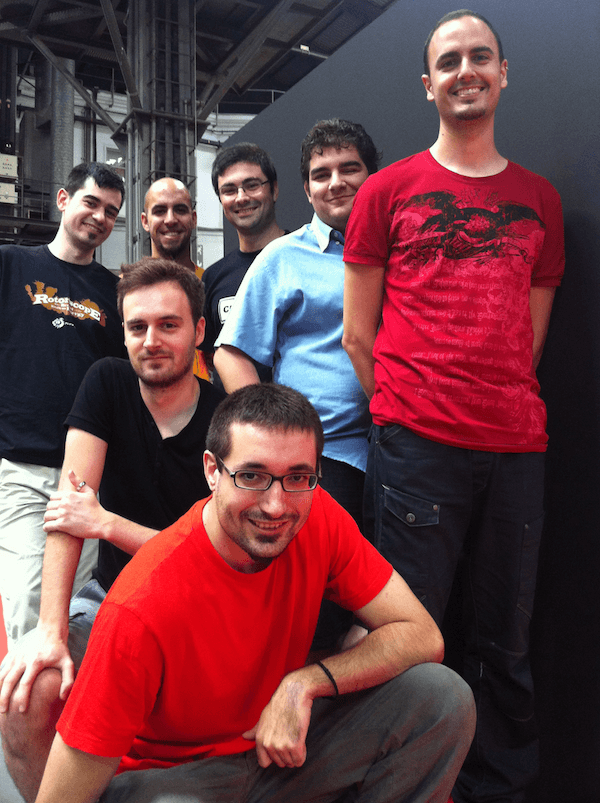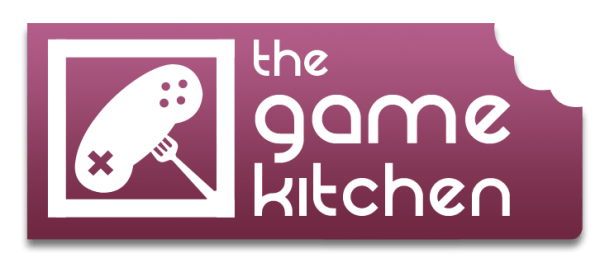 The Game Kitchen are an indie studio responsible for the point-and-click horror adventure game The Last Door. Released in chapters, the project was Kickstarted back in the tail-end of 2012 and has seen the release of its first two instalments: ‘The Letter’ and ‘Memories’. The following is our interview with the Spain-based team.
The Game Kitchen are an indie studio responsible for the point-and-click horror adventure game The Last Door. Released in chapters, the project was Kickstarted back in the tail-end of 2012 and has seen the release of its first two instalments: ‘The Letter’ and ‘Memories’. The following is our interview with the Spain-based team.
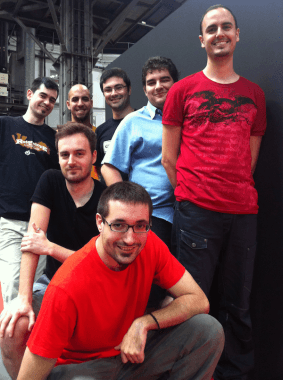
So, tell us a little about the history of the studio and how you guys got started in game development.
The Game Kitchen is a small indie studio born in Seville (Spain) in 2009. For some years, the studio focused on developing video games on demand for third parties as Nivel21 Entertainment. Some of those games reached some success; we even got national recognition winning different awards. Some examples of our previous works are: Slalom, El Gambatrón (a facebook app used by a national broadcasting channel to interact with their public), Iredia, and – one of our most award-winning products – Rotor’scope.
We are quite a homogenous group, are all in our early thirties and have lived the golden years of gaming, so we have a mutual understanding when approaching video games. Most of us have an academic background related to video games or IT so having this common background is useful in order to agree with plans and ideas when designing a game. I guess that the popular saying “birds of a feather flock together” could perfectly be applied to us.
How did the idea come about for ‘The Last Door’?
At some point during 2012, we decided to undertake an ideas contest internally, since we wanted to try something different, less business-related and more fulfilling. The very first embryo of “The Last Door”, is a pitch that Enrique – one of the team’s artists – introduced to us as a simple game prototype made with PowerPoint. His concept was based on pursuing the same feelings caused by classic horror books, where you rely heavily on your imagination to depict the scenes and situations.
What were your specific influences in conceptualising the game? Would it be safe to assume that you are also fans of films such as Hitchcock’s ‘The Birds’ (with the heavy motif of Crows)?
Well, to be honest there is no specific works which we have been particularly inspired by, but it’s true that the story revolves around cosmic terror or gothic novels from authors such as Lovecraft and Poe, who we love. Our intention was to reproduce that atmosphere of the dark ages, full of light and shadows, uncertainty, obscurantism and mysteries – characteristic factors of that age of change during the second industrial revolution in Great Britain. Regarding the crows, this is actually a nod to Lovecraft, who usually used this literary resource to create a restless ambience. Hitchcock’s ‘The Birds’? might be… conscious or unconscious, since that film left an imprint on our collective imagination and you never know where the ideas come from.
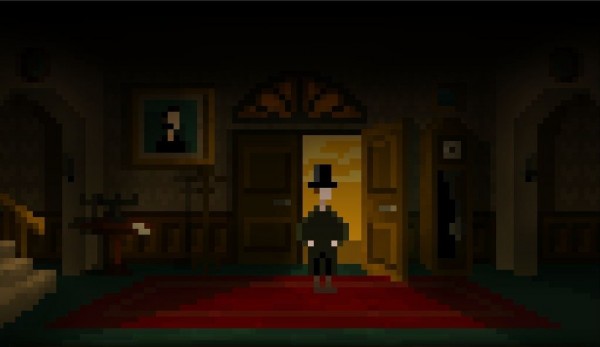
Why did you choose the 8-bit graphic style?
We prefer to describe the game as ‘low-res’ instead of ‘8-bit’ because it doesn’t actually use a limited color palette and, in addition, it mixes hi-res gradients and shades. But yes, we can’t deny that it has a great influence from 8-bit aesthetics. In fact, when we were designing the game, in wanting to replicate that role of building the scene using imagination (as creepy as your brain is capable) we tested the low-res graphics and we realized that it worked. The lack of graphic details stimulated the imagination in a special and different way as opposed to when using very detailed graphics, so we decided to take that path.
Is horror a genre that you would like to continue to explore?
As mentioned above, we are fans of horror literature authors and their literary universes seem to be the leifmotiv narrative of the game, since its very conception. So consequently, we feel quite comfortable with the horror genre. We love it and it plays a big part when developing a story that attempts to leave no one indifferent. We really enjoy when our community members send us a message through social media saying things like: “Dusk is coming, time to start playing The Last Door” or “I couldn’t get any sleep last night after playing The Last Door… love this feeling”, “A crow just knocked on my window and I almost had a heart attack” and many more. It’s amazing. A lot of people like getting scared and we are happy to help! 🙂
What was the process like of getting the game Kickstarted?
It was the first time we were crowdfunding a project and everything was new and vibrating, but it’s also very time-consuming and stressing. Since Kickstarter has a fixed period to reach the funding objective (a month), when we decided to start running the project in December 2012, we also started a race against time to set a good communication flow with the community, creating as much content as possible as the backers want to have a deep knowledge about the project they are going to support (common sense). Videos, social media, a functional website, art, team introductions, PR activities, etc. All the ideas were welcome to explain the game and to tease and convince potential backers. So, after a month of madness and frenzy, 285 backers supported the pilot chapter of our ‘The Last Door’ and this adventure took its first step.
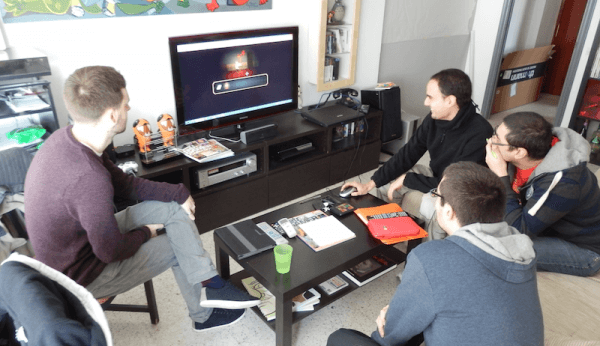
Where does the €10,000 budget go into for each chapter’s development?
We think it’s quite a modest budget taking into account that to develop a chapter we spend about 2-3 months and within the team we have four full-time resources: three programmers (Dani, Javi and Mauri) and one artist (Enrique) and on the top of that, three more part-time resources: our music composer (Carlos Viola) another artist (Mateo) and a person in charge of PR and community management (Raul). And obviously, we have many other fixed costs so it’s a matter of doing the maths; we don’t intend to make money with the game, but we’d love to live off of it. That would be a dream come true.
You guys have actively encouraged interaction and feedback from your donators and fans. How has that experience been, and what are the advantages of such a relationship with the gamers? Have they given great ideas that make you go ‘why didn’t we think of that?!’
Since the beginning we were clear about wanting to develop a staunch community. We believe in collaboration as a way of creation and we are making progress in that direction. In the last chapter, for instance, we organized a kind of contest where our community members had the chance to suggest descriptions for many objects we left intentionally undescribed within the game. The “Leave your Mark” initiative was highly successful and we are thinking about new actions to interact with our fans and make them participant in the success of the project. Following that direction, we are currently developing community translations support so the game can be localized into any language with the help of our community.
Indeed, a project like ours wouldn’t be feasible without the help of our community. They are highly helpful in finding and reporting bugs, suggestion improvements, etc. Everyday we find new posts on our website with heaps of comments, ideas and so on. All these inputs really help in the creative design and fine-tuning of the game, not to the extent of changing our original ideas, but supplementing and improving them. For instance, a couple of days ago we had a Scottish guy who recommended us some inspiring locations in his homeland for the setting of Chapter 3. Amazing.
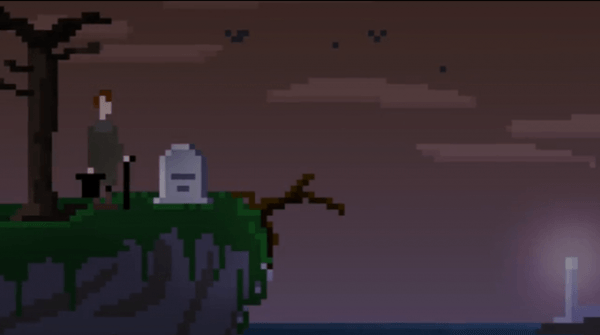
How many chapters do you see yourself making if funding permitted it? Right now, Chapter 3 has been confirmed, but could this be a further on-going series?
The Last Door is designed to be a web series and, as such, it hasn’t got a predetermined number of chapters. As long as the community continue supporting us, and provided that the series makes sense from the point of view of the story, we will keep on producing episodes. If the project stretches on, we could even divide the game in different seasons, as the TV series do.
Is the browser-based flash model a direct result of limited funding, and do you have a different release format in mind? If so, when can we hope to see a standalone release?
Undoubtedly the choice of the model was an intricate and strategic decision. The limited funding forced us to shape the game into an episodic format, to lower the amount of money required to kickstart the development to a minimum. Iterating upon this concept, we finally gave the project the format of a web series, where new chapters would not only bring the story forward, but also add new gameplay features. And once viewed from this angle, we really liked what we had in our hands. Regarding the standalone release, we are seriously considering this option since there are quite a few people who have asked us about this, perhaps as an extra reward for our backers. We have to think it over but it’s certainly on our “to do list”.
And finally, do you have anything you’d like to say to potential consumers; maybe a final pitch? (I really enjoyed the game being a fan of the different genres involved and hope to see bigger and better things from you guys in the future.)
A final pitch? Hmm, we can only guarantee our future players that they’ll love the game if they are enticed into feeling jumping frights, experiencing fear, resolving puzzles or unfolding a great and mysterious story. Not exclusive for “low resolution-pixel level” imaginative and adventurous minds, but a real gem for those who love classic adventure games.
See you at TheLastDoor.com. Thank you very much!
Thanks for reading and please support these guys if the game is of any interest to you…the future of its continued development depends on the donations of its great fans. Visit the above link for all important information.


